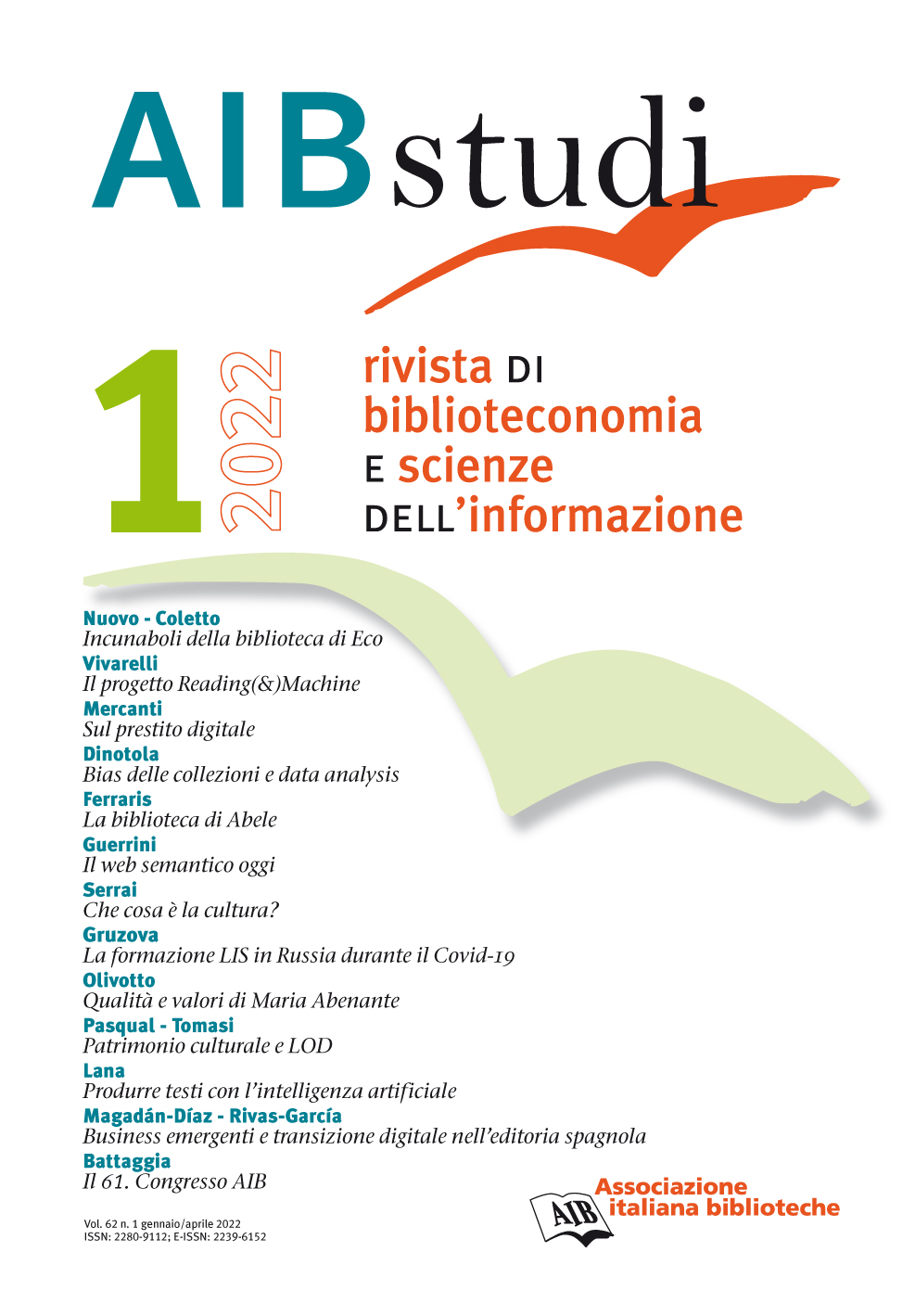Collection bias and data analysis: a model for the comparative study of LGBTQ + collections
DOI:
https://doi.org/10.2426/aibstudi-13394Keywords:
Bias, LGBTQ collections, Editorial production, BenchmarkingAbstract
In the first part the paper illustrates the results of an analysis of the Italian editorial production on LGBTQ+ issues, limited to non-fiction for adults published between 2016 and the first half of 2021.
Subsequently, the analysis focuses on the representativeness of these publications within the collections of the library systems located in ten large Italian cities. A comparative study is carried out on various aspects: years of publication, publishers, DDC classes, Conspectus levels, usage data. Moreover, through interviews with librarians a qualitative survey is also conducted, to bring to light additional elements, including the reasons and criteria for the acquisition or the non-acquisition of LGBTQ+ titles.
In conclusion, after a comparison with similar studies conducted in other geographical contexts, the author tries to understand whether cognitive biases are among the factors influencing the development of LGBTQ+ collections. Bringing out any bias is fundamental to make librarians more aware and to emphasize the professional ethics and the principles of plurality on which the concept of public library is based. This type of study also allows to obtain detailed information elements to be taken into account in projects aimed at implementing recommendation systems that exploit the potential of Artificial Intelligence and, in particular, of machine learning: it should not be forgotten, in fact, that algorithmic biases reflect real world biases.
Downloads
Downloads
Published
How to Cite
Issue
Section
License
Copyright (c) 2022 Sara Dinotola

This work is licensed under a Creative Commons Attribution-ShareAlike 4.0 International License.









